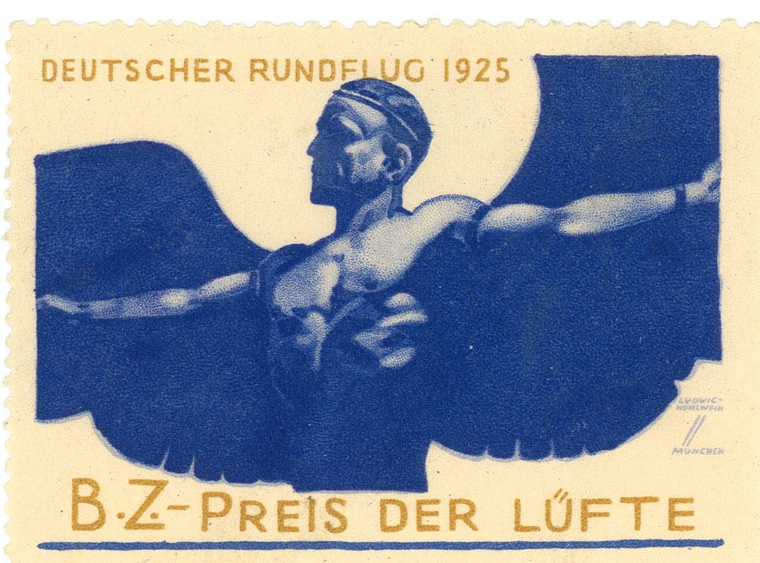 An Exhibition in the Vassar College Art Library
An Exhibition in the Vassar College Art Library
September 17 – December 17, 2015
In 1845 a new form of graphic art called the poster stamp, referred to by contemporary collectors as “Cinderellas,” was launched in Austria as a means of commemorating and advertising an important Viennese trade exhibition. Based on the printed postage stamp, which had just been introduced in England in 1840, poster stamps tended to be somewhat larger and were intended to bear messages rather than serve any official function. Circulated on envelopes, theater programs, packages and invoices, and assembled in collector’s booklets and albums, poster stamps gradually became so popular across Europe and America as an advertising medium that soon they were being designed in the tens of thousands. In 1914, for example, over 50,000 individual stamp designs were produced in Germany alone.
Despite their commemorative origins, as poster stamp production trickled off in the 1930’s so did recollection of their existence to all but a handful of collectors of historical ephemera. There is, for example, no Library of Congress classification for these objects, and virtually no art historical literature on them. This is astonishing when we consider that their designers included many of the most prominent graphic artists working in Europe and America over a sixty year period when poster art was at its height, that they engage all the major art movements and styles of the era including beaux arts, art nouveau, art deco, constructivism, futurism, dada, and surrealism, and that they present us with some of the most imaginative, visually arresting, and widely-disseminated pictorial art ever produced.
This exhibit showcases representative specimens of the medium from a substantial and significant collection of poster stamps generously gifted this year to the Vassar College Libraries by the Poughkeepsie ephemerist and collector Arthur Groten. As examples of an important but almost forgotten form of social media, we hope this collection will serve in the future as a material basis for reflection on relationships between art and industry, high and low, culture and communication, scale and distribution, memory and evanescence.

12/3 Home & gripped by la grippe, just had a chance to read this. Great! I hope to see the exhibition before it closes. Did not know of this genre, though as a kid I was an avid stamp collector. JD